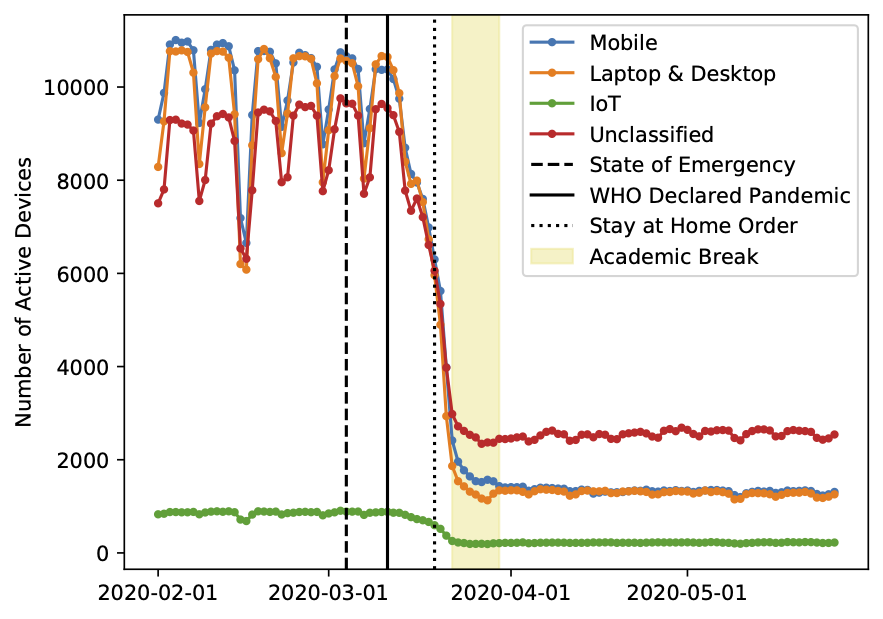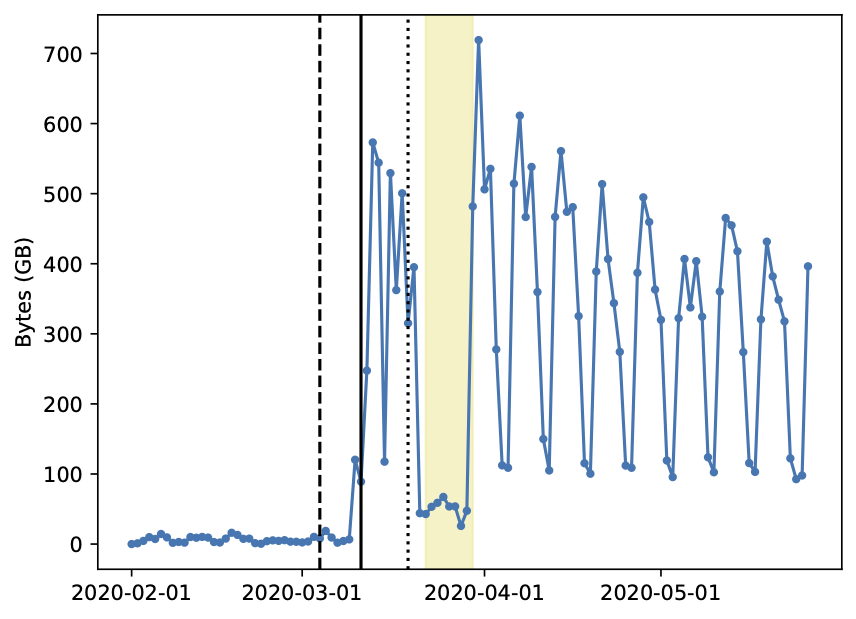
How the Pandemic Lockdown Impacted UC San Diego Undergrad Internet Use
Initial spikes followed by return to pre-pandemic levels
By:
- Josh Baxt
Published Date
By:
- Josh Baxt
Share This:
Article Content
University of California San Diego computer scientists recently investigated how the COVID-19 pandemic influenced internet browsing during the lockdown. Armed with de-identified internet use data from UC San Diego dorm Wi-Fi, the researchers examined how online school and leisure activities shifted – for both American and international students. The study was presented at the ACM Internet Measurement Conference 2021.
The research focused on several thousand students in single-occupancy housing and how they responded to isolation between February and May 2020. The group found, not surprisingly, that students increased their internet usage by 58 percent from February to April 2020. However, in May those numbers began coming down. This was true of general usage and, more specifically, social media.

Graph showing the number of devices on campus, indicating the large number of students who left campus.
“We found that domestic students increased their social media usage early in the lockdown, but then that usage fell,” said Department of Computer Science and Engineering Ph.D. student Alisha Ukani who is the first author on the study. “That was a common effect – per capita usage intensified in the early months of the lockdown and then fell, returning to pre-pandemic levels in May, which was a bit of a surprise.”
The research team, which was led by UC San Diego Department of Computer Science and Engineering Professor Alex Snoeren and included Ph.D. student Ariana Mirian, also studied the the browsing distinctions between international and U.S. students. Though they did not know who owned specific devices, they devised a rubric to differentiate these groups based on their browsing behaviors. For example, international students would be more likely to visit offshore sites.
“We came up with a very conservative classification system, where we looked at all the websites each person was visiting and found the geographic coordinates of that site,” said Ukani.
This ability to separate these populations, rather than treating them as a single monolith, enhanced the information they could extract from the user data. Because international students were often unable to find flights home, they were likely disproportionately represented among the students remaining in the dorms after lockdown.
The team primarily focused on three categories: Zoom, social media and gaming. Zoom activity increased on weekdays – class time – but also showed small increases on weekend afternoons, which might have represented calls with friends and family.
For social media, domestic use of Instagram and Facebook remained stable, declining in May. The platforms were more popular for Americans than international students, though the latter increased their use in May.

Graph showing volume of traffic for Zoom, with the spikes in usage indicating the start of remote learning.
Both domestic and international students increased using the Steam gaming platform early in the pandemic, but those numbers went down by May. A similar pattern was observed with Nintendo Switches.
This study provides useful information about internet habits during the lockdown. But even more importantly, it polishes data gathering techniques for future efforts.
“The techniques we developed in our analysis can be used in any internet usage measurement study,” said Ukani. “People can use our methods to classify international students or detect individual applications in any other context. We believe these techniques can be used by researchers outside of UC San Diego for their own measurement research.”
Share This:
You May Also Like
Stay in the Know
Keep up with all the latest from UC San Diego. Subscribe to the newsletter today.


